How to Grow & Use Bee Balm
Learn how to grow, harvest, and dry bee balm (wild bergamot), plus 8 creative ways to use it, including recipes for bee balm salve, tea, infused honey, and more!

Bee Balm (Monarda fistulosa, M. spp.) also called wild bergamot, is an excellent plant to put in a pollinator garden! Beloved by bumblebees, butterflies, and hummingbirds, bee balm plants are constantly surrounded with the audible buzz of winged creatures out and about at their work.
Beyond just pollinator appeal, though, Bee Balm has its uses for the adventuresome cook and the herbalist alike, as both the flowers and leaves are edible (and can be used as an oregano substitute in recipes!) and can be used in various herbal projects.
Growing tips:
Bee Balm is a clumping herbaceous perennial. It grows from rhizomes that will creep out and spread a bit, which should be kept in mind while planting- one singular plant, tucked in the garden this year, may be a magnificent clump three years later.
Growing from seed:
Despite the fact that Bee Balm grows from rhizomes, it’s not hard at all to start from seed! Aim to start your Bee Balm inside at least 8 weeks before your estimated final frost date of the year to get a head start on growth.
To grow Bee Balm from seed, start by taking a container of soil, and moistening it. Then, simply take a small bit of the tiny Bee Balm seeds and scatter them over top the damp soil.
Bee Balm seeds require light to germinate, so they can’t be covered. Instead, gently tamp down the soil with your fingers, pressing the seeds so they get full contact with the soil. To finish off, use a very fine, gentle spray bottle to mist just a bit of extra water over top the seeds, then cover the container’s top with a greenhouse top or clear plastic wrap, in order to slow water evaporation while still allowing the seeds to be in the light.
Place the container under grow lights, or in a sunny window. Keep warm, moist, and in the light. Germination can vary; expect sprouts usually within 10-25 days after sowing. Seeds may still germinate for some time afterwards, but if it has been over 40 days and you still have no sprouts, discard the current attempt and try again with seed from a different source.

Where to plant:
Bee Balm can be grown in both full sun and partial shade, but if you have a choice, choose to plant it in full sun: the more sun it gets, the better the show will be when it blooms.
Luckily for those of us with less-than-ideal soil, Bee Balm is a hardy plant! In fact, just about the only thing it seems to outright hate is being constantly waterlogged. Plant it in poor soil, dry soil, clay soil, sandy soil, whatever you have- as long as it’s not in soggy or in standing water, it should thrive.
Plant 2-3 feet apart from both other Bee Balm and other plants, to give it enough room.
General care:
Bee Balm is a rather tall plant, growing 2-5 ft. tall depending on location and sunlight received, and sometimes their stalks may be blown over or broken by the wind- planting up against a fence can help protect them from strong gusts.
You don’t have to worry about your Bee Balm being eaten by deer, as it’s considered deer-resistant- they don’t like the taste of it. Bee Balm is resistant to most things, really, aside from a few insects that feed on the foliage.
On the topic of pruning/deadheading: If you want to be a friend to the wildlife, leave your dead flower heads and stalks standing until spring warms up! The seeds within the flower heads are food for the birds in the scant winter months, when there’s not much else to forage.
If you do not like the scraggly look Bee Balm gets in winter, then remove the dead stems and flower heads in fall, after they have finished blooming, once the plant has gone dormant. Just prune it all the way down to the ground- everything that is currently above the soil will be dead after winter hits, and the plant grows back from its roots in the ground, not from existing growth.
Common problems:
Powdery Mildew
The main issue one often runs into with Bee Balm is powdery mildew, even if the plant has plenty of sunlight and air circulation. It usually isn’t severe enough to kill the plant, rather being a cosmetic nuisance.
Usually powdery mildew is dealt with by cutting away the infected plant matter and destroying it, and proceeding to be careful when watering the plant in the future so as not to let the leaves get wet. Some people just ignore it. Usually powdery mildew only shows up after the plant has been blooming for a while, but it can also show itself before or at the start of the blooming season.
If your plant has powdery mildew, make sure to gather all infected plant matter- fallen leaves, stems, flowers, all of it- and destroy it, either as it shows up, or at season’s end. Powdery mildew overwinters on plant debris, so an infected stalk now will carry that infection into next year’s growth, if not removed.
Other fungal issues
Leaf-spot fungus, rust, and downy mildew can also plague your Bee Balm. All these issues are handled in the same manner as powdery mildew, as they are all fungal infections. Unfortunately, Bee Balm is rather prone to those!
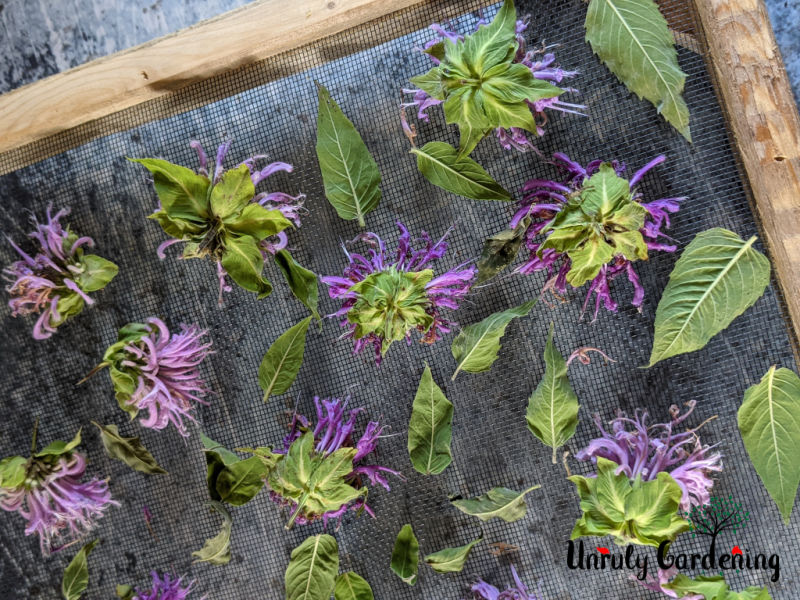
How to Harvest and Dry Bee Balm Flowers & Leaves
While you can harvest the leaves at any time (assuming it is not infected with powdery mildew or any other fungal infection), it’s said that the best flavor comes from harvesting the leaves before the flower buds ever even open!
As for the flowers, harvest them after the dew has evaporated in the morning.
Dry leaves and flowers alike by spreading them out on a screen or paper towels in a single layer, out of direct sunlight. Leave them there to dry for several days- it will take longer for the whole flowers to dry than just leaves or petals- and once completely dry all the way through, store the dried plant matter in brown paper bags or sealed glass jars. Keep out of direct light.
Shelf life is about 12 to 18 months, or as long as the plant matter still has scent and color.

8 Ways to Use Bee Balm
- Bee Balm Salve – Combine 3.5 ounces of bee balm infused oil (see how to make the oil in the article Bee Balm Hand Butter) with 0.5 ounces of beeswax. Use an empty tin can for easy cleanup, or a heatproof canning jar. Place the container in a small saucepan containing water, forming a double boiler. Heat over a medium-low burner until the wax is melted. Pour into tins or jars. Makes 4 ounces of all-purpose salve, good for dry, chapped, cracked, sore skin or minor scrapes and scratches. Can also be used as a lip balm!
- Bee Balm Hand Butter – Use bee balm infused oil and shea butter to make an intensive moisturizer for dry and sore hands. Find the full recipe in the article: Bee Balm Intensive Hand Butter.
- Bee Balm Tea – If using dried herbs, place about 1 tablespoon of dried chopped/crumbled flowers/leaves in a cup or jar. Pour 6 to 8 ounces of simmering hot water over the herb, cover with a saucer, and steep for 5 to 10 minutes. Strain and sip for sore throats or colds. If using fresh herbs, use 2 to 4 tablespoons chopped flowers/leaves and steep until cool enough to drink. (Medicinal amounts in tea aren’t recommended for pregnancy.)
- Sunburn Remedy – Make bee balm tea as above, but use twice as much herb and steep longer, until the tea is room temperature. Strain and store the strong tea in the refrigerator for up to 2 days, or freeze in ice trays for longer storage. (To use after freezing, thaw in the fridge several hours or overnight.) Put in a spritz bottle and spray over sunburned skin for cooling relief. (Alternate recipe: add yarrow to the bee balm and make a first aid spray or wound wash.)
- Bee Balm Honey – Place 1/4 cup of dried bee balm flowers and the zest of 1 lemon in a half-pint canning jar. Pour honey to fill the jar and stir with a chopstick to release air bubbles. Cover with a lid and infuse in a sunny window for 2 weeks. Spoon off the flowers, or gently heat and strain. Take bee balm honey by the spoonful for minor sore throats, or use to sweeten tea. (Not for use during pregnancy.)
- Bee Balm Spice – Grind the dry leaves to a powder and use to replace oregano in recipes.
- Poultice – Bee balm flowers and leaves can be chewed and applied as a first aid field poultice for burns, sunburns, and minor wounds.
- Soap – Combine infused oil, tea, and/or honey into a natural and nourishing cold process soap. Find the full soap recipe over at our Nerdy Farm Wife site!
Sources
Berry, Jan. The Big Book of Homemade Products for Your Skin, Health & Home. Salem, MA: Page Street Publishing, 2020. Print.
Cech, Richo. Making Plant Medicine. Williams, OR: Horizon Herbs, 2000. Print.
Tilford, Gregory L. and Mary L. Wulff. Herbs for Pets. Mount Joy, PA: Fox Chapel Publishing, 2009. Print.
Wood, Matthew. The Earthwise Herbal, Volume II. Berkeley, CA: North Atlantic Books, 2009. Print.

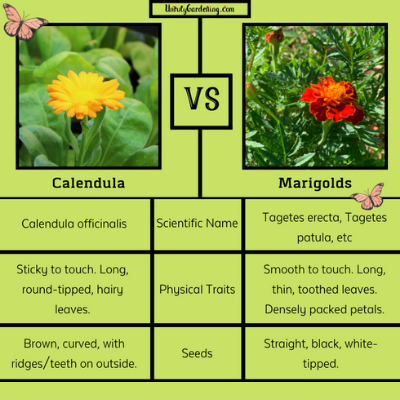
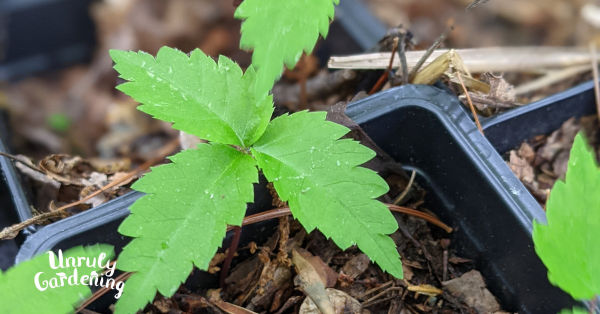
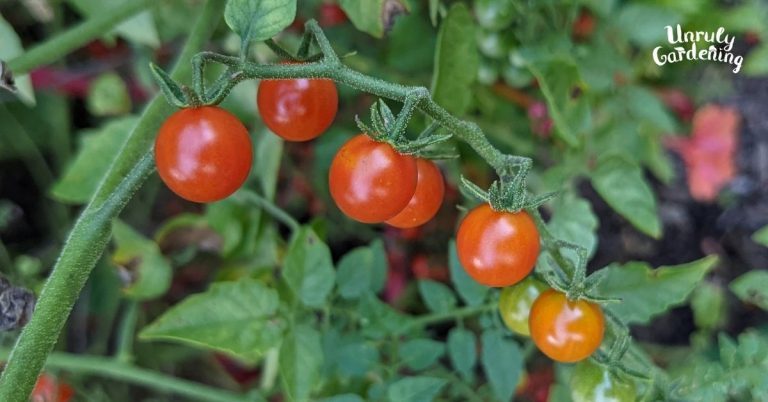
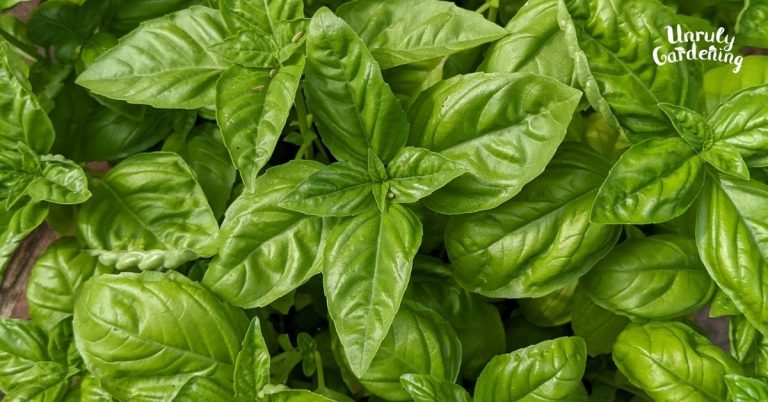
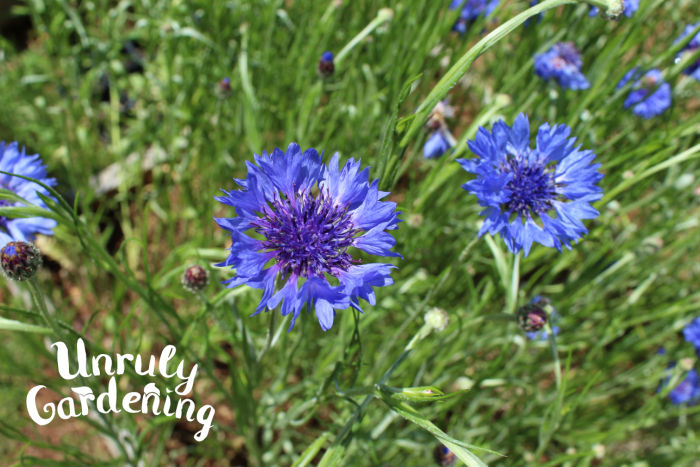
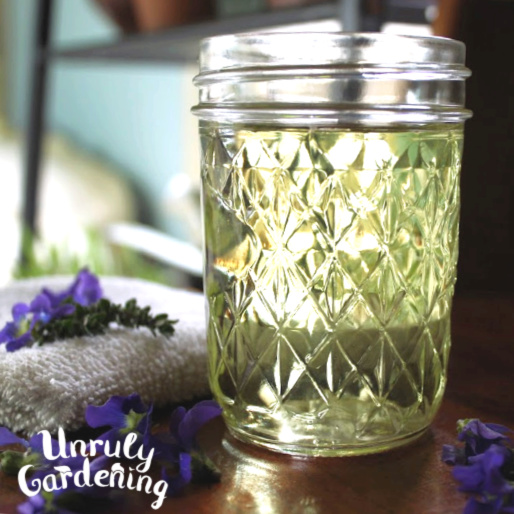
Can you use Monarda Didyma?
I have been doing reach, but I am really confused.
Thank you
Hi Jessi, Yes, you sure can! In Making Plant Medicine by Richo Cech, he mentions that you can use Monarda didyma (Oswego tea) as well as several other bee balm species for herbal medicine.
what is the reason for not using the stem on the bee balm
Hi Toni! You could use the stems, but since they’re so tough, I generally just snip off the flowers & pull off the leaves for ease of use.
Some of the leaves on my bee balm have powdery mildew. I was able to harvest new leaves without the mildew. Also, the blooms seem fine. Is it ok to use them as long as they don’t have the mildew, but other leaves do have it?
Thank you.
Hi Cheryl! Yes, that’s completely fine to gather the newer leaves without mildew even if the other leaves have it.
Unfortunately, bee balm is pretty famous for having powdery mildew, so you just have to work around it. You are doing exactly what I would do! 🙂